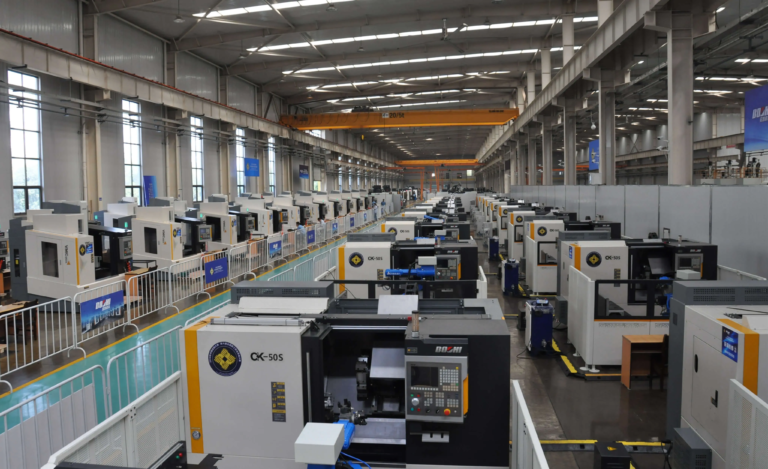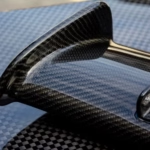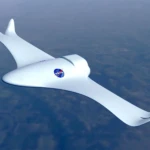The exact future: forecast of the size of the CNC processing market and the evolving landscape
CNC (Computer Numerical Control) machining is the cornerstone of modern manufacturing, transforming digital blueprints into precise, complex physical components with unparalleled accuracy and repeatability. From complex aerospace components to life-saving medical devices, CNC technology provides innovation for innovation in countless industries. As the dependence on precision manufacturing intensifies, understanding the trajectory of the CNC processing market is crucial for both businesses and investors. Here we delve into the current state and explore the compelling predictions that shape their future.
Current Landscape: Growth Foundation
The CNC machining market is already large, driven by the unremitting demand for high-precision parts. Key sectors such as aerospace, automotive, defense, medical, energy and electronics depend heavily on the components produced by CNC for performance, safety and miniaturization. Traditional three-axis machining is still common, but due to its ability to produce highly complex geometries in a single setup, reduce errors and increase efficiency, advanced technologies are quickly gained, especially five-axis machining. The rise of automation integration and the industry 4.0 principles are further streamlining processes and increasing productivity.
Market forecast: on a steep upward trajectory
Comprehensive industry analysis has always been invested in strong growth in the global CNC processing market over the next decade. Although specific numbers vary slightly between research firms, the consensus points to:
- Important compound annual growth rate (CAGR): Forecasts represent healthy CAGR, usually in 6% to 9%from now until at least 2030 and beyond.
- A large increase in market value: With the current base built on billions of dollars a year, the market is expected to be possible Double or even triple its size In the next 10-15 years. Forecasts often make market value more comfortable than 2030-2032 to USD 100 billionsome long-term estimates reach 2035 figures significantly higher.
Key Drives Intensify Expansion
Several interconnected factors are driving this impressive growth forecast:
- Demand in high-growth industries: Aerospace and defense require lightweight, ultra-proprietary components. The medical sector requires biocompatibility, complex implants and tools. Electric vehicles (EVs) and advanced driver assistance systems (ADAs) require dedicated precision parts. There is no sign of slowing down in these industries.
- Advances in CNC technology: Proliferation Five-axis CNC machining It is the main catalyst. Its ability to process complex shapes with fewer settings will greatly reduce lead time, minimize processing errors and improve surface finishes. Machine accuracy, software (especially CAM), and continuous improvements in integration with CAD systems can enhance functionality. For manufacturers like Greatlight, investing in cutting-edge five-axis equipment allows us to perfectly position these evolving needs.
- The rise of mass customization and rapid prototypes: Consumers and businesses are increasingly demanding tailor-made solutions. CNC machining is inherently suitable for low to medium production and rapid prototyping, enabling cost-effective customization. The agility offered by the premium CNC store allows faster iterations and marketing time for new products.
- Supply Chain Resilience and Re-Equipment: Recent global disruption highlights the vulnerability of extended supply chains. Many companies are now prioritizing regional manufacturing sources ("Reissue" or "Nearly classified") is used for critical components. Reliable, high-quality CNC processing partners, especially those who provide comprehensive solutions locally, become essential assets.
- Material Innovation: The growing use of advanced materials (e.g., high-strength aerospace alloys, specialized polymers, high temperature composites) requires complex processing capabilities. Like Greatlight, facilities can handle a wide range of materials ranging from aluminum, steel and titanium to exotic alloys and engineering plastics are increasingly valuable.
- Embrace automation and industry 4.0: The integration of robotics for loading/unloading, automated inspection systems, and data-driven process optimization using IoT sensors can improve consistency, reduce labor costs and enable predictive maintenance, and enhance the overall competitiveness of CNC facilities.
Key roles of advanced manufacturers (e.g. Greglight)
Navigating this growth requires not only participants but partners of innovators. Leading manufacturers recognize that success depends on:
- Invest in advanced infrastructure: Have the most advanced Five-axis CNC machining centerLike those who use it strategically on Greatlight, it is no longer a luxury, but a necessity for efficient and cost-effective complex geometric shapes.
- Material mastery: From normal grades to challenging Exotics, the ability to specialize in handling a wide range of materials portfolios expands the customer’s solution space.
- End-to-end service integration: Provides seamless one-stop solution – including comprehensive Post-treatment, finishing (anodization, plating, painting, polishing) and meticulous quality control – Significantly simplifies the customer’s supply chain and accelerates project completion.
- Engineering Partnership: True expertise lies not only in operating machines, but also in understanding the challenges of manufacturing. Early in the design phase (Manufacturability Design-DFM) collaboratively optimized CNC machining parts, reducing costs and improving results. This problem-solving approach is crucial to our professional philosophy.
- Agility and responsiveness: Market reward speed. Manufacturers available Customized fast delivery times for precise machining It does not harm the important value of quality capture.
in conclusion
The CNC processing market is expected to achieve significant and sustained expansion due to technological innovation, a surge in demand in strategic industries and a wider economic shift to regionalization and customization. This growth trajectory emphasizes the critical importance of precision engineering in the global manufacturing ecosystem. Success in this evolving landscape requires collaboration with CNC processing providers that not only provide essential services.
Providers equipped Advanced five-axis functiontechnical expertise in handling a wide range of materials and complex designs, and the agility to provide comprehensive, rapidly evolving solutions will help businesses take advantage of this growth and bring their most innovative ideas to life. For organizations looking to leverage the power of precision machining, aligning with forward-looking, technology-driven partners (Greatlights) ensures the expertise and capabilities needed to thrive in this dynamic future.
Frequently Asked Questions about CNC Processing and Market Trends (FAQs)
Q: What exactly is CNC processing?
one: CNC (Computer Numerical Control) machining is a subtraction manufacturing process, where pre-programmed computer software controls the movement of factory tools and machinery. It can break down the precise shape of metal, plastic, wood, foam and composite into complex parts by removing material (workpiece) from solid blocks (workpieces).Q: Why is the CNC processing market forecasting such strong growth?
one: Key drivers include increased demand for high-precision components in aerospace, medical, automotive (especially electric vehicles) and electronics; rising adoption of advanced five-axis machining; trends in mass customization and rapid prototyping; supply chain transfers favor regional manufacturing; and continuous technological advancements improve efficiency and capabilities.Q: What are the advantages of five-axis CNC machining over three-axis?
one: Five-axis CNC machining allows the cutting tool to move on five different axes simultaneously (X, Y, Z, and rotation on both axes, usually A and B or C). This allows highly complex geometry to be machined in a single setup, greatly reducing cycle time, thereby improving accuracy by minimizing repositioning errors and achieving excellent finishes on complex features.Q: What materials can CNC process?
one: CNC can process large amounts of materials. Common choices include metals (aluminum, steel, stainless steel, brass, copper, titanium), plastics (ABS, nylon, PEEK, DELRIN) and composites. Advanced facilities such as Greatlight are dedicated to machining common materials and more challenging appearances.Q: What’s there "One-stop post-processing and completion service" What does it mean?
one: This means that CNC machining providers are more than just a comprehensive service provided by the cutting process. This includes critical value-added steps such as heat treatment, surface finishes (anodization, coating, paint, paint, powder coating, polishing), assembly, welding and strict quality control/checking – all under one roof. This simplifies the process, ensures consistency in quality and saves customer time and logistical hassle.Q: Why is speed important in custom CNC machining?
one: Faster lead times allow companies to accelerate product development cycles (rapid prototypes), quickly respond to market changes or demand fluctuations, minimize downtime for replacement parts, and ultimately enable products to market faster, thus providing a huge competitive advantage. Efficient premium stores, such as Greatlime, prioritize speed and precision.- Q: How do I make sure my custom CNC machining parts meet the exact requirements?
one: Work with well-known renowned manufacturers known for their expertise, advanced equipment such as five-axis machines, and strict quality control processes. Provide clear, detailed drawings including tolerances, material specifications, surface treatment requirements, and any post-treatment requirements. Choose a provider like Greatlight with a professional problem-solving approach to ensure they work with you to get the best results for your precise parts.

















